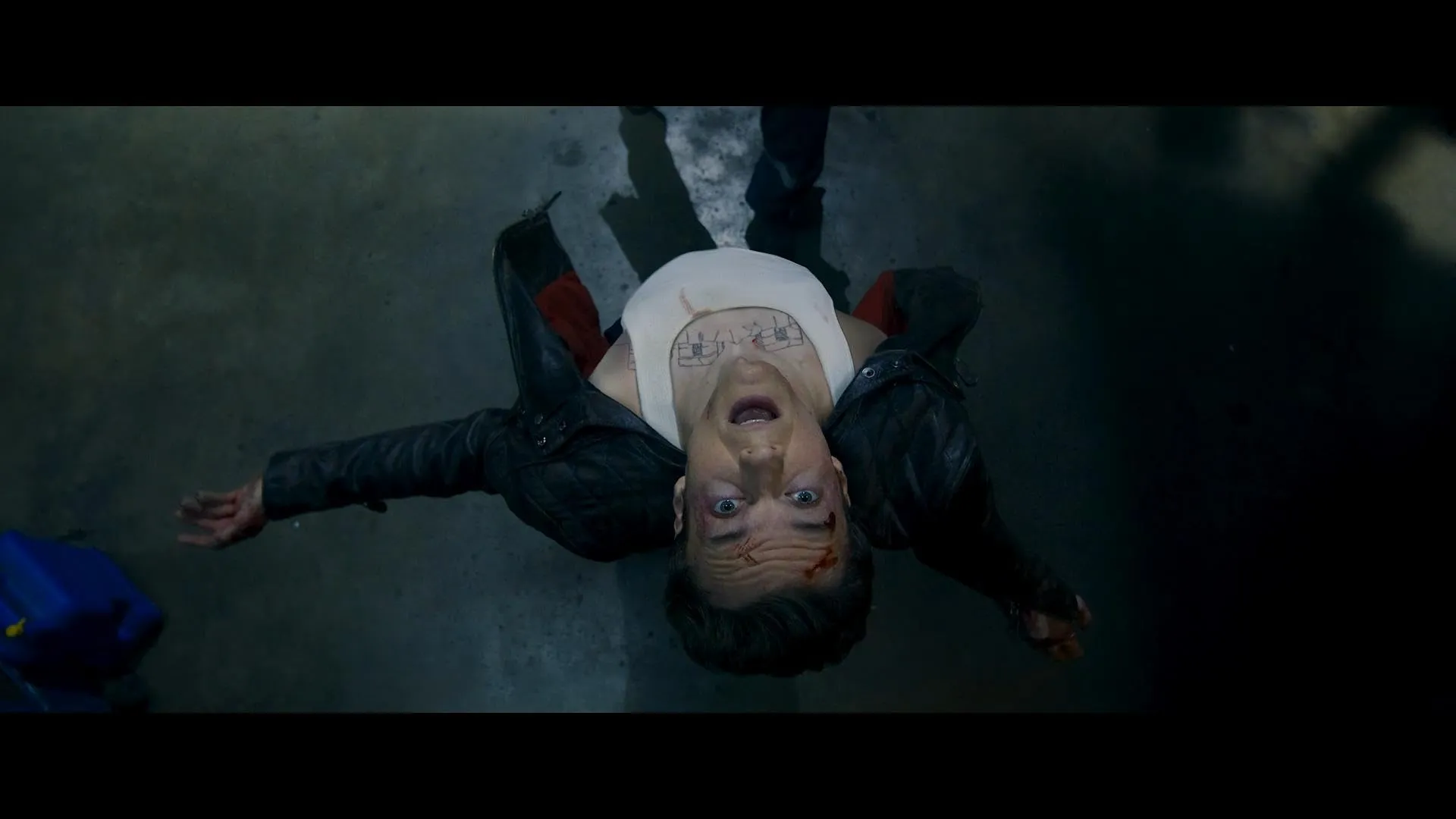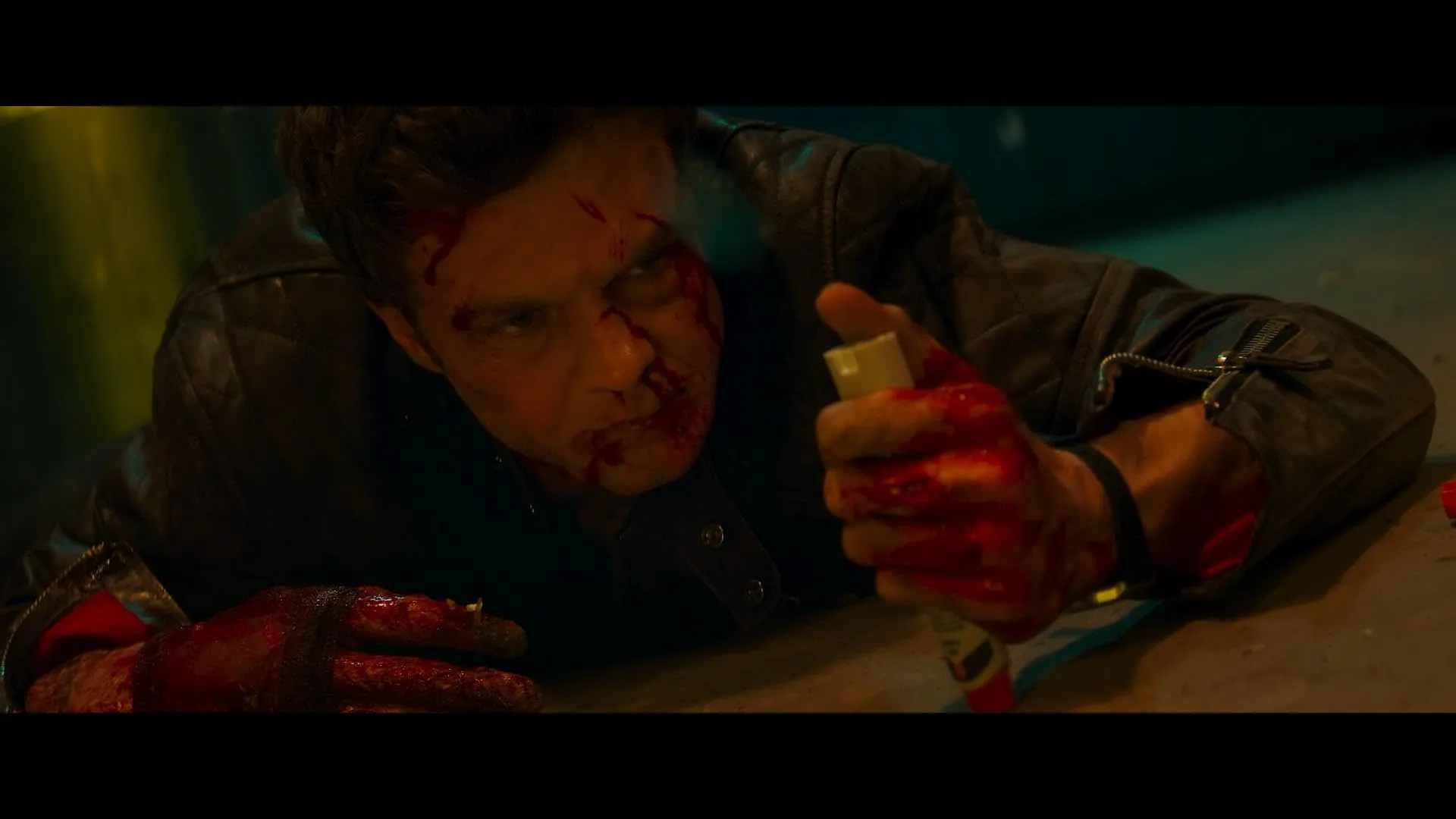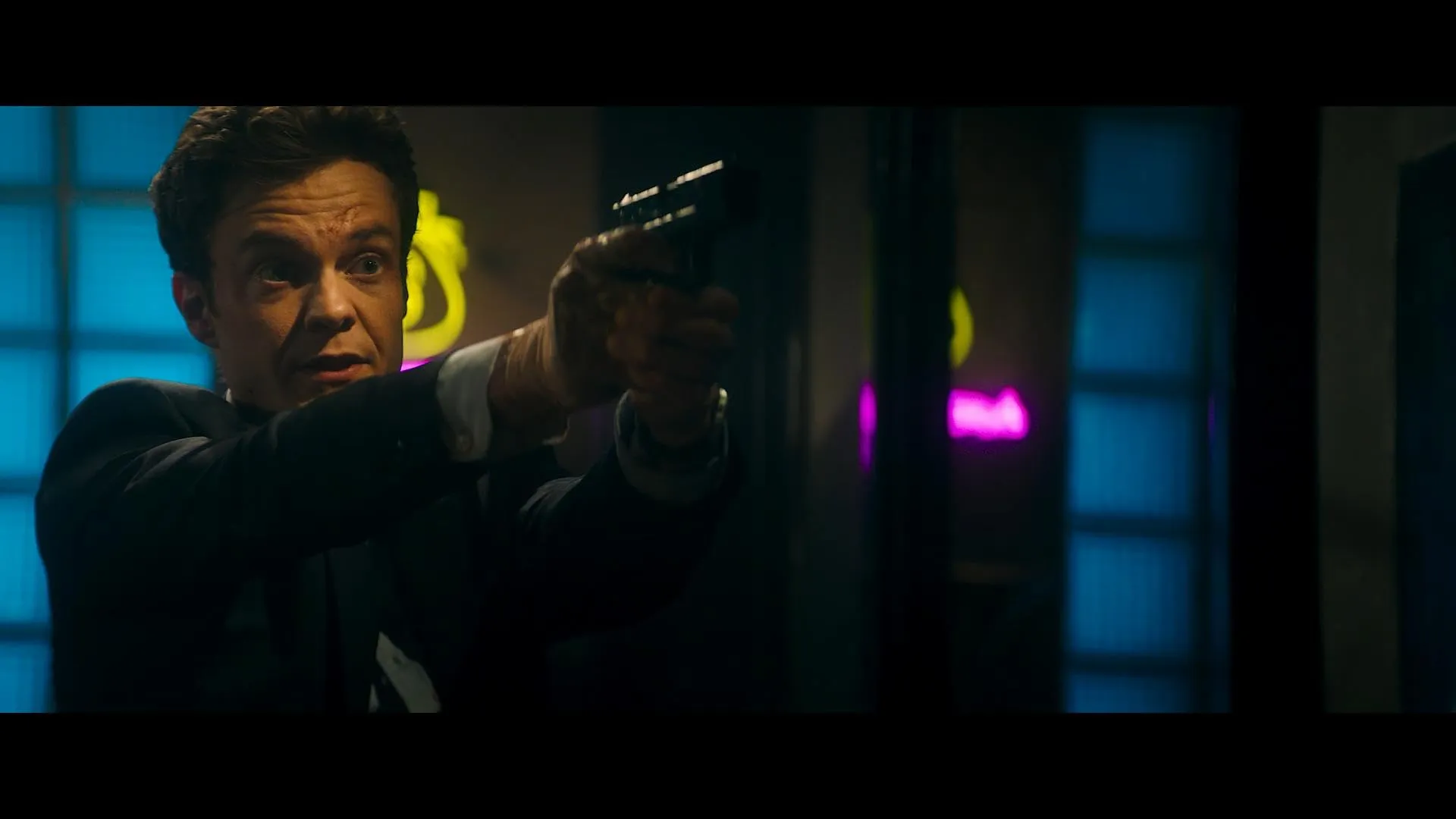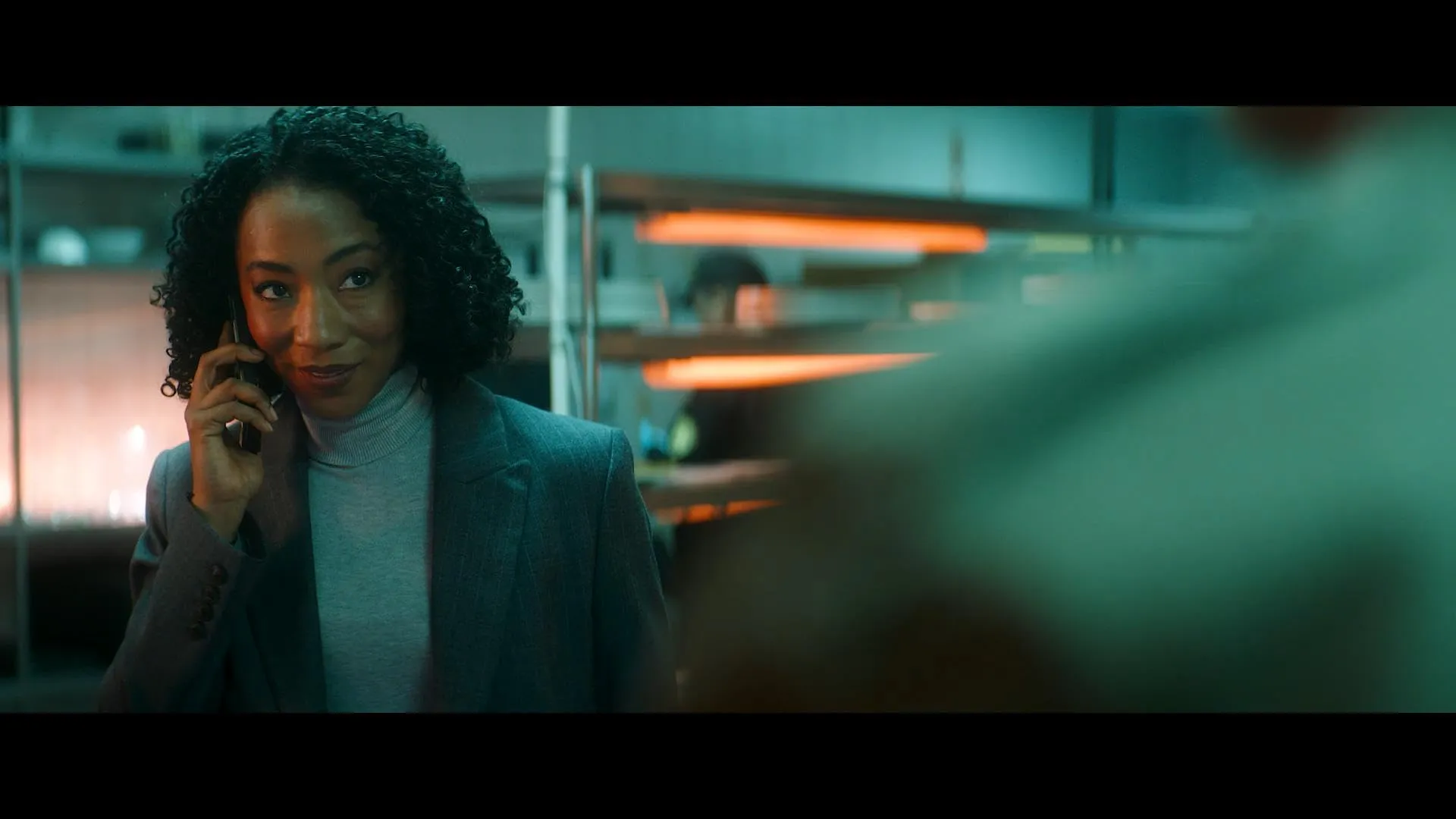Novocaine emerges as a fascinating hybrid—a film that reads like a meticulously designed RPG where every narrative beat functions as a game mechanic. At its core, the film introduces us to Nathan Caine, a risk-averse assistant bank manager whose rare condition of congenital insensitivity to pain (CIPA) transforms his mundane existence into a high-stakes arena.
Like an underdog protagonist in an indie title, Nathan’s life is governed by precise “game rules”: a cautious daily routine punctuated by a life-altering encounter with Sherry that flips his script from safety to rebellion.
The film’s tone oscillates much like a well-balanced game, blending visceral, gory action sequences with moments of dark humor that echo the unpredictable spontaneity of player-driven narratives. Each scene is calibrated to evoke the thrill of combat encounters and the tension of strategic decision-making—where every choice, whether it’s a reckless dash into danger or a measured step towards transformation, carries its own weight of consequence.
By fusing the kinetic energy of an action set-piece with the emotional depth of character progression, Novocaine reimagines the traditional action-hero archetype. The film’s deliberate interplay between vulnerability and valor not only subverts expectations but invites viewers to experience its narrative as an interactive exploration of risk, consequence, and the transformative power of love.
The Quest of Transformation: Narrative Mechanics in Motion
In Novocaine, the narrative unfolds much like a well-crafted RPG quest, where every chapter of Nathan Caine’s life is a meticulously designed level. Initially, we meet Nathan in his “safe zone”: a mundane existence as an assistant bank manager.
Here, his daily routines—fraught with calculated precautions to avoid triggering his congenital insensitivity to pain—serve as the tutorial stage, establishing both his vulnerabilities and the restrictions of his condition. Supporting characters populate this early game world, from cautious colleagues to the subtle influences of his work environment, all of which set the stage for his impending transformation.
The narrative’s inciting incident is a masterstroke in player-driven storytelling. A seemingly chance encounter with Sherry introduces a compelling romance that functions as the narrative’s branching decision point. This moment, akin to a quest initiation in indie RPGs, disrupts Nathan’s equilibrium and raises the stakes significantly.
The sudden bank robbery that follows acts as a critical trigger, turning routine day-to-day challenges into high-risk objectives. Sherry’s kidnapping is the pivotal event that forces Nathan out of his comfort zone, much like a game mechanic that compels players to engage with an unforeseen, urgent side quest.
As Nathan embarks on his dangerous rescue mission, the plot ascends in tension—mirroring escalating enemy encounters in a challenging game level. The film cleverly uses pacing akin to a balanced combat sequence interspersed with narrative flashbacks that deepen our understanding of his character.
Key plot twists and unexpected challenges emerge throughout, keeping the experience fresh and engaging, ensuring that every decision carries weight and consequence, much like the impactful choices in the best RPGs.
Character Dynamics: The Player Archetypes in Motion
In Novocaine, Nathan Caine functions as the quintessential underdog protagonist whose journey mirrors that of a well-designed RPG character. Nathan’s background—a sheltered, risk-averse bank manager shaped by his inability to feel pain—sets him up as a character defined by both limitations and hidden potential.
Much like an RPG hero beginning with a defensive build, his cautious lifestyle is both a curse and an inadvertent strength, forcing him to learn new combat strategies on the fly. This risk-averse nature creates an intriguing internal conflict: his natural hesitancy battles against an emerging drive to act heroically when stakes escalate.
Jack Quaid’s performance is key to this transformation, blending vulnerability with bursts of raw determination. His portrayal captures the subtle emotional cues akin to a character slowly unlocking new abilities, shifting from a timid support role to a proactive lead.
Sherry enters the narrative as a catalyst for Nathan’s metamorphosis, playing a dual role that transcends the typical damsel-in-distress trope. She functions not only as the object of desire but also as an independently complex character with her own narrative arc—much like a secondary protagonist in an indie RPG who influences the hero’s quest. Her moments of resilience and determination add layers to her character, prompting player choices that feel both meaningful and consequential.
The supporting cast further enriches this narrative system. Roscoe, acting as the comic relief and loyal ally, injects humor and a sense of grounded camaraderie that contrasts sharply with Nathan’s cautious demeanor, reminiscent of a trusty sidekick whose skills and quips lighten high-stakes encounters.
Meanwhile, the antagonists—especially the charismatic yet psychopathic Simon—are designed with enough nuance to be both menacing and absurd, much like the unpredictable bosses found in challenging game levels. Even the minor characters, such as the detectives, contribute texture to the world, ensuring that every interaction feels purposeful and integral to the overall narrative design.
The Heart of Vulnerability: Themes and Emotional Undertones
Novocaine leverages its singular premise—an action hero who literally can’t feel physical pain—to delve into a landscape of emotional vulnerability and transformation that resonates like a well-crafted indie RPG narrative.
The film’s exploration of love and transformation is akin to a pivotal player choice in an RPG; it forces Nathan Caine to step beyond his meticulously curated “safe mode.” Here, the risk of falling for Sherry becomes a powerful catalyst, revealing that true courage isn’t about the absence of pain, but the willingness to embrace it—even if that pain is felt only emotionally.
Nathan’s lifelong caution, designed as a protective buffer, ironically isolates him from the world’s chaotic beauty. Much like a character trapped in a safe haven, his overzealous self-preservation becomes a barrier to genuine connection.
The film contrasts this sterile security with the wild unpredictability of emotional awakening, challenging traditional notions of masculinity and heroism. In doing so, it redefines the action hero archetype: an everyman who finds strength in fragility, questioning what heroism truly means when physical prowess is limited by an extraordinary condition.
Humor plays an essential role as a coping mechanism, serving as a dynamic shield that tempers the sting of vulnerability—much like a well-timed quip during a challenging boss fight in an indie game.
The film juxtaposes the literal absence of physical pain with the metaphorical, often more potent, ache of personal loss and transformation. This duality invites viewers to question their own boundaries, engaging with the narrative on both a visceral and reflective level.
Combat in Cinematic Mode: Action, Visuals, and Technical Wizardry
Novocaine orchestrates its action sequences with the finesse of a finely tuned combat system in an RPG, where every move has weight and consequence. The film’s fight scenes are a masterclass in innovation: Nathan’s inability to feel pain transforms his physical encounters into a strategic dance.
In one memorable set piece, his condition becomes both a liability and a tactical asset—mirroring the risk-reward mechanics seen in games like Dark Souls, where taking damage can lead to powerful counterattacks if managed correctly. The exaggerated, almost cartoonish violence is interwoven with moments of genuine peril, keeping the audience engaged much like a well-paced boss fight in a top-tier indie title.
Visually, the film employs dynamic camera angles, quick cuts, and intimate close-ups that serve as the visual equivalent of immersive exploration in an RPG. These techniques not only heighten the visceral impact of each confrontation but also underscore the film’s oscillation between gritty realism and stylized absurdity—much like the artful blend of pixel art and modern effects in indie classics.
The editing rhythm is particularly noteworthy, seamlessly weaving rapid-fire action with slower, introspective moments that deepen character insight and build tension.
The practical effects work is another standout; the physical damage Nathan endures is depicted with a raw, almost tactile quality. Scenes featuring booby-trapped environments and the inventive repurposing of everyday objects as weapons elevate the technical execution to an art form, reminiscent of meticulously designed in-game mechanics that reward creativity. Stunt coordination pushes the boundaries of physical comedy, ensuring that each high-octane sequence is both safe and spectacular.
Sound design and musical choices further amplify this experience. The carefully crafted score, punctuated by R.E.M.’s “Everybody Hurts,” enriches both the emotional stakes and the adrenaline of the action, drawing viewers deep into the film’s unique narrative ecosystem.
Laughter in the Midst of Mayhem: Humor, Tone, and Impact
Novocaine deftly weaves humor into its high-octane narrative, much like a well-calibrated dialogue system in an RPG that rewards both timing and choice. The film’s interplay between slapstick moments and sophisticated wit mirrors the balance found in indie titles where every quip feels earned.
During chaotic fight sequences, moments of levity—often emerging organically from exchanges between Nathan and Sherry—act as skillful cooldowns, ensuring that even the most adrenaline-fueled scenes retain a human touch.
The film’s tonal shifts are managed with the precision of a narrative engine that toggles seamlessly between different emotional states. It transitions from a lighthearted, almost tutorial-like beginning into a series of intense, gory confrontations without jarring the viewer out of the experience. This balancing act is reminiscent of games that manage to blend exploration and combat while keeping character progression coherent and engaging.
Beyond its clever humor, Novocaine resonates on an emotional level by highlighting the vulnerability of its hero—a quality that elevates its action-comedy framework. Its innovative blend of comedic timing and genuine emotional stakes invites both laughter and empathy, ensuring that the film’s overall charm is as memorable as it is impactful.
The Review
Novocaine
Novocaine delivers a fresh, exhilarating twist on the action-comedy genre. Its inventive combat, engaging narrative, and authentic emotional beats make for a surprisingly heartfelt experience. The film’s seamless blend of humor, vulnerability, and explosive action keeps viewers both entertained and invested.
PROS
- Innovative action sequences
- Strong character development
- Witty, well-timed humor
CONS
- Occasionally over-the-top violence
- Some tonal shifts may feel abrupt




















































